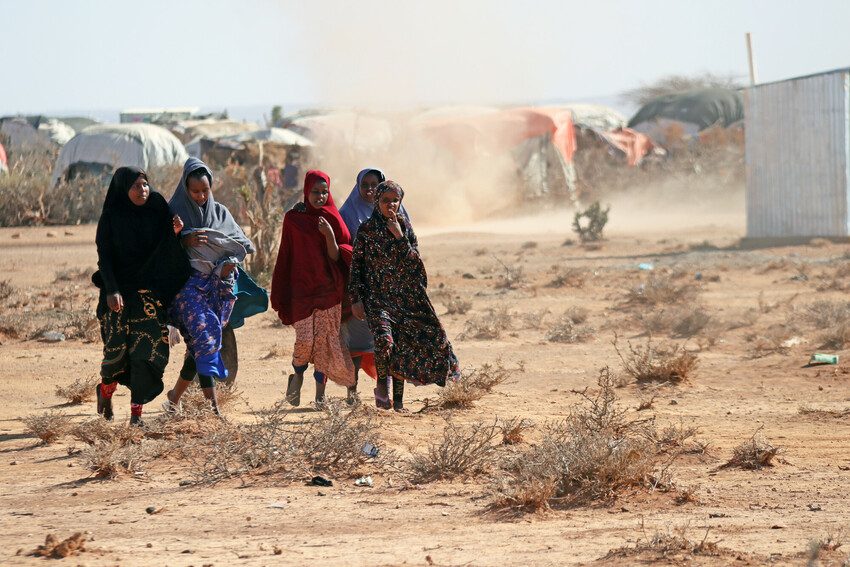Unlocking solutions for displaced girls and young women
27 June 2022<strong>The UN Secretary-General’s Action Agenda for Internal Displacement is a major leap forward in finding solutions for millions of internally displaced people (IDPs), including displaced girls and young women, but to succeed, it must put gender equality, child rights and IDPs themselves at the heart of its efforts. </strong>

On Friday 24 June 2022, the United Nations Secretary-General (UNSG) launched his Action Agenda on Internal Displacement. The Agenda builds on recommendations from the High Level Panel on Internal Displacement report launched in 2021. Its goal is to help IDPs find a durable sustainable solution to their displacement, prevent new crises from emerging and ensure those facing displacement receive protection and assistance. The Agenda is unique in that it centres the generation of political momentum as a key path for achieving change. It also emphasizes the critical importance of working with a variety of actors, including IDPs themselves and governments, in order to unlock solutions for internally displaced persons, including displaced girls and young women.
The appointment of Mr Robert Piper as the UNSG Adviser on Internal Displacement provides a major opportunity to realize the vision of the Action Agenda
The Special Adviser has been tasked to be the UN’s prime advocate for solutions, galvanizing political will through high-level advocacy, strengthening linkages with development actors and incentivizing collaboration within the UN system. However, to realize the full potential of his role and truly drive action to address internal displacement, it is critical that gender equality and child rights be at the heart.
Put gender equality and child rights front and centre of efforts to find solutions
More than 33 million children and young people are internally displaced worldwide. This number alone is sufficient to grasp the urgency in resolving the displacement of children and young people, protecting their immediate and future well-being.
Tackling gender inequalities and promoting child rights are urgent priorities to unlock solutions for internal displacement.
In addition, some of the countries with the largest number of IDPs are also those with the worst conditions for women and girls. Countries such as Syria, the Democratic Republic of Congo and Afghanistan were featured at the bottom of progress in achieving gender equality across the Sustainable Development Goals (SDGs). Gender inequalities are a major driver of a variety of issues impacting women and girls throughout their lives, such as access to quality education, health care, nutrition, risk of child marriage, and gender-based violence, among many others.
A large number of displaced children in highly unequal societies puts displaced girls and young women at higher risk of not accessing a variety of services they need to thrive. Many of them are unable to take decisions over their life, pursue life-changing education or access proper healthcare or social protection services. They are also at higher risk of sexual, physical, mental and economic harm, and trafficking, among other forms of gender-based violence which have long-lasting impacts on their mental and physical health.
Given the magnitude of the problem, tackling gender inequalities and promoting child rights are urgent priorities to unlock solutions for internal displacement. For this matter, Mr. Piper can use his position to open avenues for decision-makers to ensure access of all internally displaced children to equal opportunities, including to quality education and protection from all forms of violence.
Mobilize collective action and empower displaced people to be part of the solution
Whilst acknowledging that governments have the primary responsibility to find solutions for internal displacement, including for displaced girls and young women, the Action Agenda recognises the need for a ‘whole-of-society approach’. That is, solutions for internal displacement should include a variety of actors in their design, implementation and monitoring, including internally displaced people themselves.
Collective action across society is not only a matter of principle but one of efficiency and effectiveness. Having IDPs themselves, NGOs and national human rights institutions engaged in the process of drafting solutions allows for policymakers to tap into expertise that can foster innovative and all-encompassing solutions.
A crucial part of collective action involves the participation of IDPs themselves, including children and young people, in the search for a solution. Concretely, it means to unpack and provide the necessary support, considering particular measures to guarantee the participation of IDPs of diverse ages, genders and backgrounds.
The challenges ahead are huge. Climate change, growing conflicts, economic crises and scepticism over global solidarity will certainly put the Action Agenda to the test. Yet, through collective action and by putting children and gender equality at the centre of our efforts, we have a good chance to find solutions that better respond to the needs of displaced girls and young women, and indeed, all those affected by internal displacement.
Categories: Emergencies, Protection from violence
Activism child marriage Child protection in emergencies Children with disabilities Civic engagement Climate change Climate change activism COVID-19 Education in emergencies Food crisis Gender-based violence girls' leadership Migrant and displaced children Organisation information Out-of-school children Safeguarding Sexual and reproductive health services Untagged Youth in media